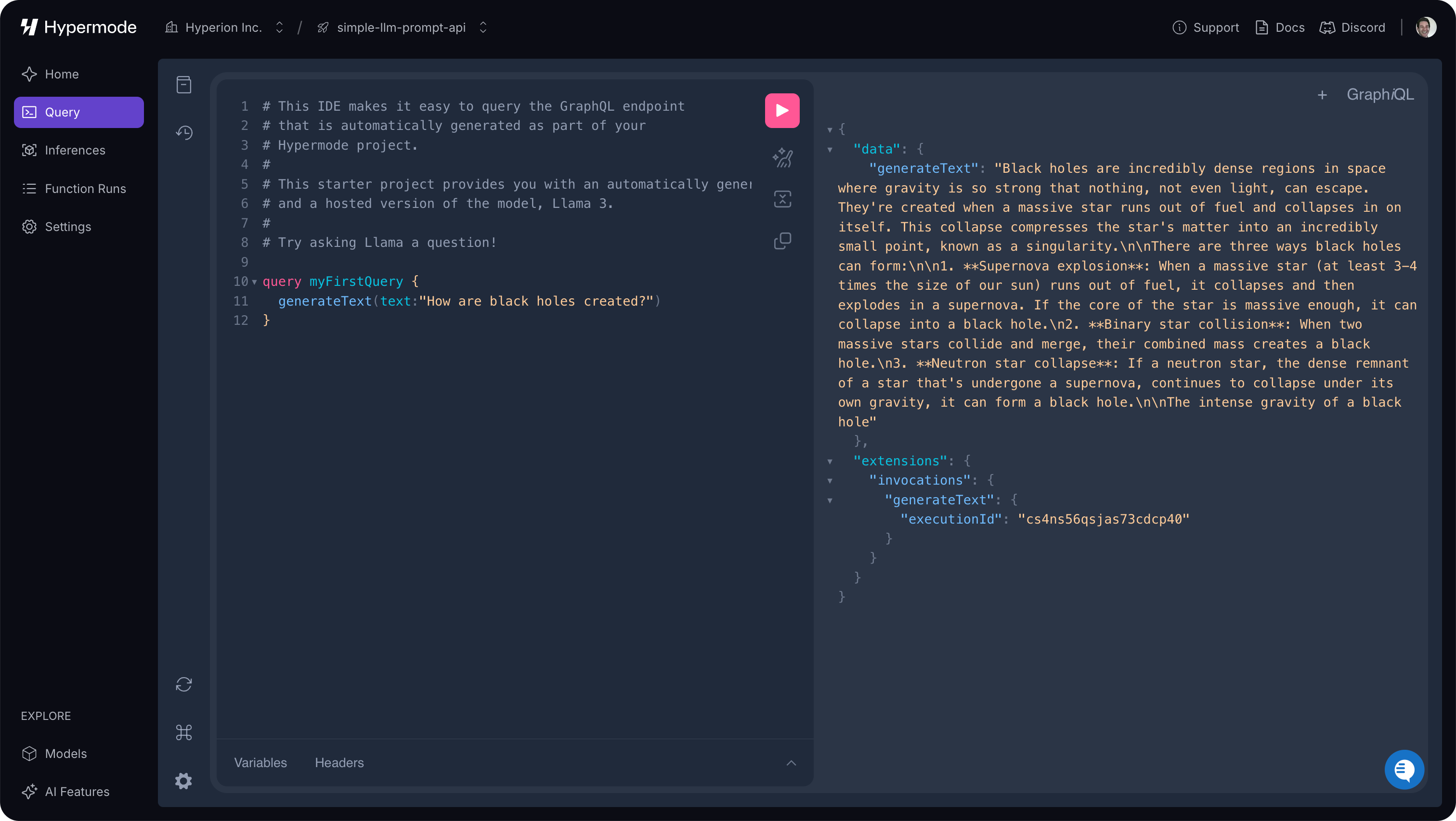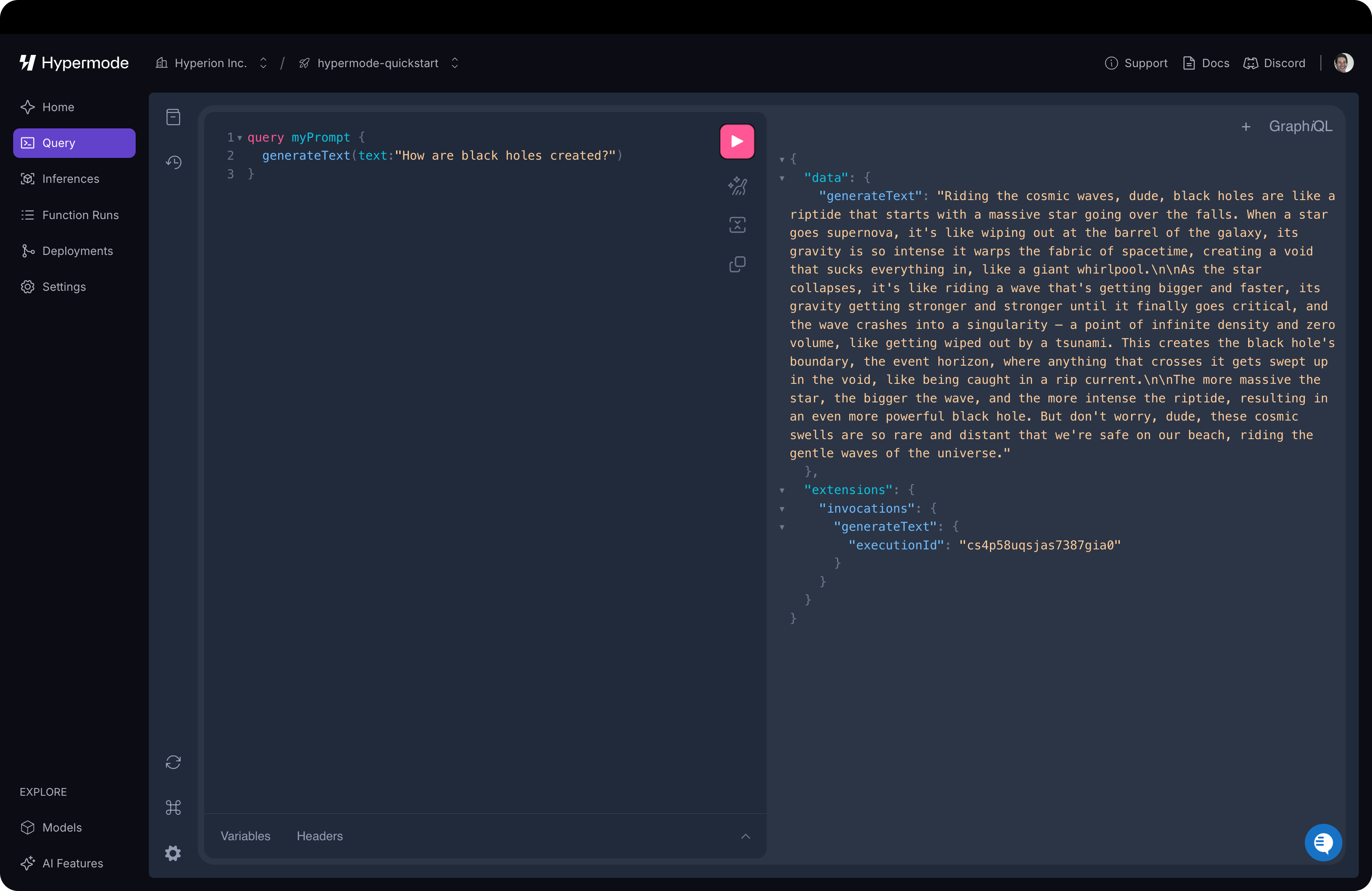Prerequisites
- Node.js - v22 or higher
- Text editor - we recommend VS Code
- Terminal - access Modus through a command-line interface (CLI)
- GitHub Account
Deploying your first Hypermode project
1
Create Modus app
We built Hypermode on top of Modus, an open source, serverless framework for crafting
intelligent functions and APIs, powered by WebAssembly. With Hypermode, you can deploy,
secure, and observe your Modus apps.To get started, create your first Modus app. You can import this app into
Hypermode in the next step.
2
Import Modus app
You can import your Modus app via the Hypermode Console or through the terminal with Hyp CLI.When Hypermode creates your project, a runtime is initiated for your app as well as connections to
any Hypermode-hosted models.
- Hypermode Console
- Hyp CLI
Navigate to the Hypermode Console and click New Project.
When prompted, connect your GitHub account and select the repository you want to import.
Once you’ve selected your repository, click “Import” to deploy your app.
3
Explore API endpoint
After deploying your app, Hypermode lands you in your project home. You can see the status of your
project and the API endpoint generated for your app.From the Query page, you can run a sample query to verify it’s working as expected. In the following
query, we’re going to use the 
generateText function to generate text from the shared Meta Llama
3.1 model based on the prompt “How are black holes created?”
4
Observe function execution
Let’s dig deeper into the behavior of our AI service when we ran the query by looking at the
Inferences page. You can see the step-by-step inference process and the inputs and outputs of
the model at each step of your function.
After invoking the Meta Llama model from the function code, we can see the function execution. In this case, it took Llama 4.4 seconds to
reply to the prompt. We can also see the parameters on both the inputs and outputs.

5
Customize your function
Hypermode makes it simple to iterate quickly. Let’s make a few changes to your app
to explore how easy customizing your API is.Our API is responding using language that is more formal than we want. Let’s update our
Save the file and push an update to your Git repo. Hypermode automatically redeploys
whenever you push an update to the target branch in your Git repo. Go back to the Hypermode Console
and run the same query as before. You should see the response now uses surfing analogies!
generateText function to respond using exclusively surfing analogies.- Go
- AssemblyScript
Go to the
main.go file and locate the generateText function. Modify the function to only respond like a surfer, like this:main.go


